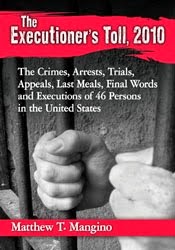LAPD has bolstered its online surveillance operations by adding another piece of technology to its roster. LAPD’s newest surveillance partner, Cobwebs Technologies, gathers data from your phone and social media activity and turns it into intelligence, reported KnockLA. The Israeli company’s surveillance software, which outsources much of their surveillance work to AI and machine learning, gives police warrantless access to your personal information.
Cobwebs Technologies was founded in 2015 by former IDF
special operatives Omri Timianker, Shay Attias, and former Mossad official Udi Levy. The
company is part of the controversial billion-dollar
surveillance industry in Israel, where the technology is often tested on
Palestinians before being implemented elsewhere in the world. During a
2014 trip
to Israel, LAPD’s top brass saw firsthand how Israel used drones, social
media surveillance software, and automatic license plate readers. Within five
years of the trip, the department would be using all three. This year, Cobwebs
was acquired by private equity firm Spire Capital,
which owns the surveillance companies GeoTime and PenLink. The company
currently has several contracts with local and federal agencies including the
Texas Department of Public Safety (who use it to
track migrants), the IRS,
and the Department
of Homeland Security.
LAPD purchased the nearly $200,000-per-year
subscription to the technology in 2022 with the help of a $600,000 DHS
grant that focuses on terrorism prevention in urban areas. Part of the purchase
was a suite of over 50 digital tools, including surveillance and investigative
software built by other companies. In the grant proposal for the
technology, LAPD said it would make it easier to share intelligence with
federal police agencies.
Meta, the company behind Facebook, Instagram, and
WhatsApp, banned accounts used by Cobwebs and labeled it a
surveillance-for-hire company. In a 2021 report, Meta found that
Cobwebs was being used to target activists, opposition politicians, and
government officials in Hong Kong and Mexico. The report pushes back against
the surveillance company’s claims that it tracks only criminals and terrorists.
It is not news that LAPD monitors your social media and surveils your online activity. It is also not news that your phone and computer are doing the same, sending you targeted ads based on the links you click and apps you use. Cobwebs can combine all of this data and turn it into intelligence for police with the help of two platforms: Tangles and Webloc.
Tangles is Cobwebs’ marquee platform. It uses AI and
machine learning to automate its surveillance capabilities. The software’s AI
is continually searching, scraping, and extracting information from the
public’s online activity. This includes monitoring geotags of geographic
locations, social media posts, and online communities, including those on the
dark web.
Tangles allows police to create extremely detailed
dossiers on people, either targeted by police or found by Cobwebs while
scraping personal and online data. Per the company’s promotion material, the
information it provides to police includes “locations, context, internal
relations, group structures, [and] hierarchies,” as well as the influence of
the target’s “social communities.” This data-driven profiling, as Cobwebs
describes it, can infer a person’s social network, whether they are “likely
perpetrators of violence,” and monitor changes in a person’s sentiment. Cobwebs
says it can help police “prevent events before they occur.”
Cobwebs’ AI can also profile a person by using its
deep image analysis to make “connections” the company claims are “invisible to
the naked eye.” The software scans photos and videos to find connections in
people’s faces and intentions in text and labels within those photos, labeling
anything it deems suspicious. Cobwebs doesn’t elaborate on what connections the
software makes or how it can assert intentions from an image.









